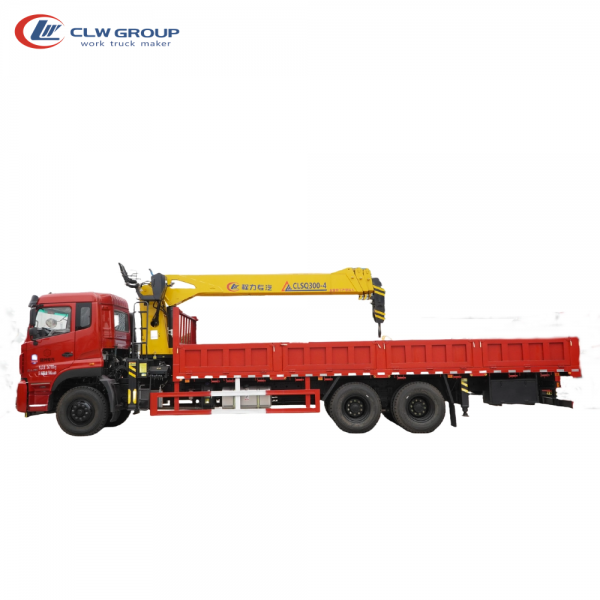Introduction
Garbage trucks play a crucial role in waste management systems, collecting and transporting refuse to disposal facilities. These large vehicles operate in urban, suburban, and rural areas, navigating through various road conditions and interacting with pedestrians and other vehicles. Due to their size and unique operational requirements, garbage trucks are equipped with a range of safety features to protect both their operators and the public. In this comprehensive guide, we will explore the various safety features incorporated into modern garbage trucks to ensure safe and efficient operations on the road.
1. Vehicle Design and Visibility
One of the key safety considerations in garbage truck design is visibility. Given the size and configuration of these vehicles, operators must have an unobstructed view of their surroundings to navigate safely. Modern garbage trucks are designed with large windows, strategically placed mirrors, and advanced camera systems to enhance visibility from the driver's seat. Rearview cameras and proximity sensors help operators detect obstacles and pedestrians in blind spots, reducing the risk of accidents during maneuvers such as reversing or turning.

Furthermore, garbage trucks are often equipped with high-mounted lights and flashing beacons to improve visibility to other road users, especially in low-light conditions or inclement weather. Reflective striping and bright color schemes are also commonly employed to increase the visibility of garbage trucks on the road, alerting drivers and pedestrians to their presence.
2. Operator Safety Features
The safety of garbage truck operators is of paramount importance, given the demanding nature of their work. To protect operators from potential hazards, modern garbage trucks are equipped with a range of safety features inside the cab. Ergonomically designed seats and controls help reduce operator fatigue during long shifts, while adjustable steering columns and pedals allow for personalized comfort settings.
In the event of a collision or rollover, garbage trucks may be equipped with rollover protection systems (ROPS) and reinforced cab structures to safeguard the operator from injury. Additionally, advanced airbag systems and seatbelt restraints further enhance operator safety in the event of a crash. Some models also feature automatic braking systems and collision avoidance technology to mitigate the risk of accidents on the road.
3. Load Management and Stability
Proper load management is essential for maintaining the stability and maneuverability of garbage trucks during collection and transport operations. Overloading a garbage truck can compromise its braking and handling capabilities, increasing the risk of accidents and rollovers. To address this concern, modern garbage trucks are equipped with load monitoring systems and onboard weighing scales to ensure that the vehicle remains within safe operating limits.
In addition, garbage trucks may feature hydraulic systems that compact and secure the waste load, preventing shifting or spillage during transit. Automatic load leveling systems help distribute the weight evenly across the vehicle, reducing the risk of instability on uneven terrain. Some models also incorporate stability control systems that adjust braking and steering inputs to maintain control in challenging driving conditions.
4. Environmental and Emission Controls
Garbage trucks are subject to strict environmental regulations due to their role in waste management and transportation. To minimize their impact on air quality and reduce greenhouse gas emissions, many modern garbage trucks are equipped with advanced emission control systems. Diesel particulate filters (DPFs) and selective catalytic reduction (SCR) systems are commonly used to reduce harmful pollutants such as nitrogen oxides and particulate matter.
In addition to emission controls, garbage trucks may feature alternative fuel systems such as compressed natural gas (CNG) or electric powertrains to further reduce their carbon footprint. These eco-friendly technologies not only lower emissions but also contribute to overall sustainability efforts in the waste management industry. Moreover, noise reduction measures are often incorporated into garbage truck design to minimize disturbance to residents and businesses during collection activities.
5. click this and Monitoring Systems
Regular maintenance is essential to ensure the safe and reliable operation of garbage trucks throughout their service life. To facilitate proactive maintenance practices, modern vehicles are equipped with onboard diagnostics systems that monitor key components and alert operators to potential issues. These systems can detect abnormalities in engine performance, hydraulic systems, and braking mechanisms, allowing for timely repairs and preventive maintenance.
Furthermore, garbage trucks may feature telematics systems that provide real-time data on vehicle performance, fuel consumption, and route efficiency. By analyzing this data, fleet managers can optimize operations, reduce downtime, and improve overall safety standards. Some models also incorporate remote monitoring capabilities, enabling maintenance teams to diagnose and address issues remotely, minimizing the need for costly downtime and service disruptions.
6. Conclusion
In conclusion, garbage trucks are essential assets in waste management systems, facilitating the collection and transportation of refuse in communities around the world. To ensure the safety of operators, pedestrians, and other road users, modern garbage trucks are equipped with a range of advanced safety features and technologies. From enhanced visibility and operator ergonomics to load management systems and emission controls, these vehicles are designed to prioritize safety and efficiency on the road.
As technology continues to evolve, garbage truck manufacturers are constantly innovating to enhance safety standards and environmental sustainability in their products. By investing in state-of-the-art safety features and adopting best practices in maintenance and monitoring, fleet operators can maximize the safety and performance of their garbage trucks, ultimately contributing to a cleaner and safer environment for all.
